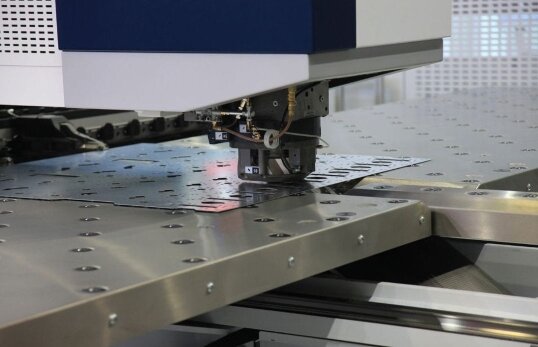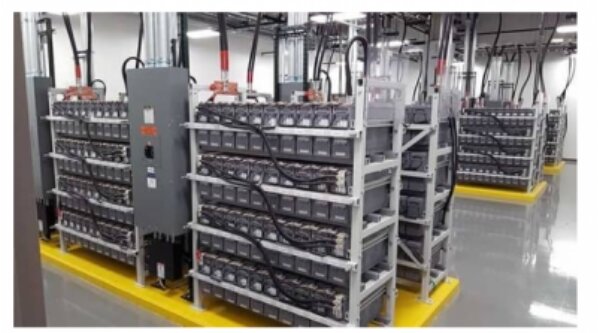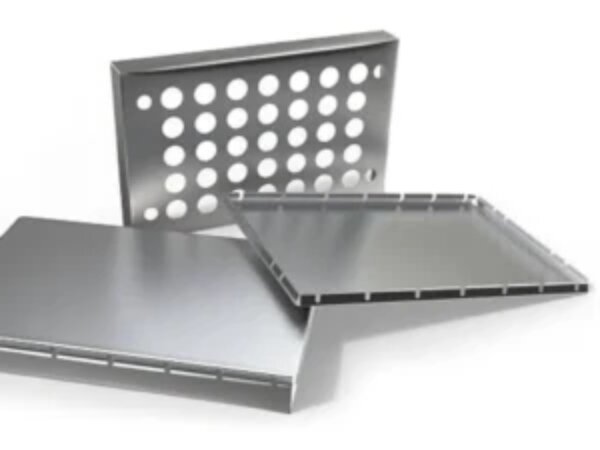عندما يتعلق الأمر باللحام، يمكن أن تساعد طرق مختلفة في تحقيق النتيجة المرجوة. وإحدى هذه الطرق هي اللحام بالقوس المعدني المحمي (SMAW)، أو اللحام بالعصا. تُستخدم هذه العملية على نطاق واسع، ولكن قد لا يفهم الكثير من الأشخاص كيفية عملها أو متى يتم استخدامها. سنقوم في هذا الدليل بشرح عملية وفوائد وتطبيقات لحام القوس المعدني المحمي (SMAW) لمساعدتك على اتخاذ القرار الصحيح بشأن وقت وكيفية استخدامه.
SMAW هي عملية لحام حيث يتشكل قوس كهربائي بين قطب كهربائي قابل للاستهلاك وقطعة العمل. تعمل الحرارة المتولدة من القوس على إذابة القطب الكهربائي، مما يؤدي إلى تكوين تجمع من المعدن المنصهر. ثم يندمج هذا المعدن مع المادة الأساسية، مما يشكل رابطة قوية. يخلق الطلاء الموجود على القطب الكهربائي غاز تدريع يحمي اللحام من التلوث.
والآن بعد أن فهمت الأساسيات، دعنا الآن نستكشف كيفية استخدام SMAW في مواقف مختلفة ولماذا يظل خيارًا شائعًا في اللحام. مرونته وسهولة استخدامه تجعله خياراً رائعاً للعديد من أنواع المشاريع.

كيف يعمل لحام القوس المعدني المحمي؟
يستخدم SMAW قوساً كهربائياً يتشكل بين قطب اللحام وقطعة العمل. تعمل الحرارة المنبعثة من القوس على إذابة القطب الكهربائي، الذي يندمج مع المادة الأساسية. وعندما يبرد المعدن المنصهر، يتصلب ويشكل رابطة قوية. يخلق طلاء التدفق على القطب الكهربائي غازًا يحمي المعدن المنصهر من التلوث. وهذا يضمن أن يكون اللحام قويًا وذو نوعية جيدة.
المكونات الرئيسية لـ SMAW
تلعب العديد من المكونات دورًا في عملية SMAW، وكل منها حاسم في العملية.
القطب الكهربائي
القطب الكهربائي في SMAW عبارة عن قضيب معدني مطلي بالتدفق. تعمل الحرارة المنبعثة من القوس على إذابة القطب، ويشكل المعدن المنصهر اللحام. ينتج عن طلاء التدفق غازات تحمي اللحام من الملوثات الموجودة في الهواء.
ماكينة اللحام
توفر ماكينة اللحام التيار الكهربائي لتشكيل القوس بين القطب الكهربائي والمادة الأساسية. يمكن أن تستخدم الماكينة التيار المتردد (AC) أو التيار المباشر (DC)، اعتمادًا على نوع المادة التي يتم لحامها والاستخدام.
إمدادات الطاقة
مزود الطاقة يعطي آلة اللحام الجهد والتيار الصحيحين. إن ضبط مصدر الطاقة الصحيح هو المفتاح للحصول على قوس مستقر ولحام عالي الجودة.
غاز التدريع
يولد طلاء التدفق حول القطب الكهربائي غاز التدريع. يحمي هذا الغاز حوض اللحام المنصهر من الأكسدة والملوثات الأخرى في الهواء. ويساعد على ضمان أن يكون اللحام نظيفًا وقويًا.
دور القطب الكهربائي في SMAW
يقع القطب الكهربائي في صميم عملية اللحام بالقطب الكهربائي SMAW. فهو لا يوفر فقط معدن الحشو للحام، ولكنه يولد أيضًا غاز التدريع الذي يحمي حوض اللحام. يعتمد نوع القطب المستخدم على المادة التي يتم لحامها والاحتياجات المحددة للمهمة.
ما المعادن التي يمكن لحامها باستخدام SMAW؟
SMAW هي تقنية لحام متعددة الاستخدامات يمكن استخدامها على معادن مختلفة. وهذا يجعلها خيارًا شائعًا في العديد من الصناعات. ولكن ما هي المعادن الأفضل لهذه الطريقة؟
يمكن أن يلحم SMAW عدة أنواع من المعادن، بما في ذلك:
- الكربون الصلب: أحد أكثر المعادن التي يتم لحامها بشكل شائع باستخدام SMAW. إن قوته ومتانته تجعله مثاليًا لمجموعة واسعة من التطبيقات، بدءًا من البناء وحتى صناعة السيارات.
- الفولاذ المقاوم للصدأ: يعمل لحام SMAW بشكل جيد مع الفولاذ المقاوم للصدأ، مما يوفر لحامات قوية ومقاومة للتآكل. ومع ذلك، هناك حاجة إلى أقطاب كهربائية محددة لمنع التلوث وضمان جودة اللحام.
- الحديد الزهر: على الرغم من صعوبة استخدام لحام الحديد الزهر SMAW، إلا أنه يمكن استخدامه في لحام الحديد الزهر. يلزم وجود أقطاب خاصة والتحكم الدقيق في الحرارة لتجنب التشقق والعيوب الأخرى.
- فولاذ منخفض السبائك: SMAW فعال في لحام الفولاذ منخفض السبائك. يوفر لحامات قوية، مما يجعله مناسبًا لأوعية الضغط والأنابيب والمكونات الهيكلية.
- معادن أخرى: يمكن لـ SMAW أيضًا لحام مواد مثل سبائك النيكل والنحاس وبعض أنواع الألومنيوم. ومع ذلك، قد يتطلب ذلك أقطابًا كهربائية أو تقنيات متخصصة.

أنواع الأقطاب الكهربائية المستخدمة في اللحام بالقوس المعدني المحمي
يعد نوع القطب المستخدم في لحام SMAW مهمًا لجودة اللحام وقوته. فيما يلي الأنواع الرئيسية للأقطاب الكهربائية المستخدمة في SMAW.
الأقطاب الكهربائية المغلفة الأساسية
الأقطاب الكهربائية المغلفة الأساسية مصنوعة للحام الفولاذ والسبائك عالية القوة. تتميز بطبقة سميكة منخفضة التدفق الهيدروجيني تساعد على إنشاء لحام بعيوب أقل وخصائص ميكانيكية أفضل.
الأقطاب الكهربائية السليولوزية
تُستخدم الأقطاب الكهربائية السليلوزية عند الحاجة إلى حرارة عالية وتبريد سريع. ينتج طلاء التدفق السليلوز الذي ينتج غازات تحمي حوض اللحام. هذه الأقطاب الكهربائية رائعة للحام في مواضع مثل اللحام الرأسي لأعلى أو العلوي، حيث يكون الاختراق العميق مهمًا.
أقطاب الروتيل الكهربائية
تحتوي أقطاب الروتيل على طلاء تدفق يحتوي على كمية عالية من ثاني أكسيد التيتانيوم. يخلق هذا الطلاء قوسًا سلسًا ومستقرًا مع القليل من الترشيش. أقطاب الروتيل سهلة الاستخدام وتعمل بشكل جيد في لحام المعادن المختلفة، بما في ذلك الفولاذ الكربوني والفولاذ المقاوم للصدأ.
أقطاب مسحوق الحديد الكهربائية
يتم طلاء أقطاب مسحوق الحديد بالتدفق الذي يحتوي على مسحوق الحديد، مما يضيف معدن حشو إلى حوض اللحام. توفر هذه الأقطاب الكهربائية معدلات ترسيب أعلى، مما يعني أنها يمكن أن تضع المزيد من المواد بشكل أسرع.
أقطاب كهربائية منخفضة الهيدروجين
صُممت الأقطاب الكهربائية منخفضة الهيدروجين لتقليل الهيدروجين في حوض اللحام، مما يساعد على منع التشقق الناتج عن الهيدروجين. تعتبر هذه الأقطاب الكهربائية ضرورية للحام الفولاذ عالي القوة وسبائك الفولاذ والمواد الأخرى الحساسة للهيدروجين.
مميزات اللحام بالقوس المعدني المحمي
تقدم SMAW العديد من المزايا التي تجعلها خيارًا شائعًا للعديد من تطبيقات اللحام. دعونا نلقي نظرة على السبب الذي يجعل هذه العملية تحظى بتقدير كبير في الصناعات في جميع أنحاء العالم.
الفعالية من حيث التكلفة وإمكانية الوصول
الأقطاب الكهربائية معقولة التكلفة، كما أن المعدات اللازمة ل SMAW أقل تكلفة مقارنة بطرق اللحام الأخرى. بالإضافة إلى ذلك، لا يتطلب لحام SMAW غازات تدريع متخصصة، مما يقلل من تكاليف التشغيل.
براعة في التطبيق
SMAW متعدد الاستخدامات للغاية. ويمكنه لحام مجموعة كبيرة من المعادن، مثل الفولاذ الكربوني والفولاذ المقاوم للصدأ والحديد الزهر. وهو يعمل مع كل من المواد السميكة والرقيقة، مما يجعله قابلاً للتكيف مع العديد من احتياجات اللحام المختلفة.
إمكانية نقل SMAW
تُعد ماكينات اللحام بالليزر SMAW مثالية للمشاريع التي تحتاج إلى التنقل. ماكينات اللحام مدمجة وسهلة النقل، مما يجعلها مناسبة لمواقع العمل البعيدة.
القدرة على اللحام في أوضاع مختلفة
يمكن استخدام لحام SMAW في أوضاع متعددة، مثل اللحام المسطح والأفقي والرأسي والعلوي. وهذا يجعلها مثالية للحام في المساحات الضيقة أو على الهياكل الكبيرة حيث الحاجة إلى زوايا مختلفة.
الحد الأدنى من المعدات المطلوبة
تحتاج SMAW إلى معدات أقل مقارنة بعمليات اللحام المتقدمة الأخرى. يتضمن الإعداد الأساسي ماكينة لحام وحامل قطب كهربائي ومشبك أرضي وأقطاب كهربائية.
أين يتفوق اللحام بالقوس المعدني المحمي?
إن SMAW ليست طريقة فاخرة، ولكنها تنجز المهمة حيث تفشل الطرق الأخرى. وهنا تكمن براعة هذه الطريقة:
البناء والبنية التحتية
- وصلات العوارض الفولاذية في المباني الشاهقة
- إنشاء الجسور وإصلاحها
- تحت الأرض لحام خطوط الأنابيب
- تصنيع أبراج المياه
يحب العمال استخدام SMAW هنا لأنهم يستطيعون اللحام في الهواء الطلق في الهواء الطلق في ظل الرياح أو الأمطار الخفيفة. لا حاجة لأسطوانات الغاز.
بناء السفن والتطبيقات البحرية
- بناء الهيكل وإصلاحه
- تجهيزات السطح والسور
- صيانة منصات النفط البحرية
- إصلاحات الحوض الجاف
تتطلب بيئات المياه المالحة لحامات قوية. يتعامل SMAW مع الفولاذ السميك من الدرجة البحرية بشكل أفضل من معظم العمليات.
التصنيع والمعدات الثقيلة
- تصنيع ماكينات التعدين
- تصنيع المعدات الزراعية
- تجميع الرافعة والرافعة
- بناء أوعية الضغط
عند ربط المقاطع السميكة (1/4 بوصة وما فوق)، غالبًا ما تتفوق SMAW على عمليات تغذية الأسلاك من حيث الاختراق والقوة.
أعمال الإصلاح والصيانة
- إصلاح المعدات الزراعية في الحقل
- أجزاء الماكينات المكسورة
- صيانة مسار السكك الحديدية
- إصلاح المنشآت الصناعية
تحافظ أطقم الصيانة على جاهزية حفارات SMAW لأنها تعمل على معدن متسخ وصدئ دون تجهيزات مكثفة.
صناعات السيارات والفضاء الجوي
- إصلاحات الإطارات في الشاحنات الثقيلة
- تصنيع الهياكل حسب الطلب
- بعض مكونات معدات هبوط الطائرات
- أقفاص دحرجة سيارات السباق
على الرغم من أنه ليس الخيار الأول للمواد الرقيقة، إلا أن SMAW لا يزال يلعب دورًا حيثما كانت المتانة القصوى أكثر أهمية.
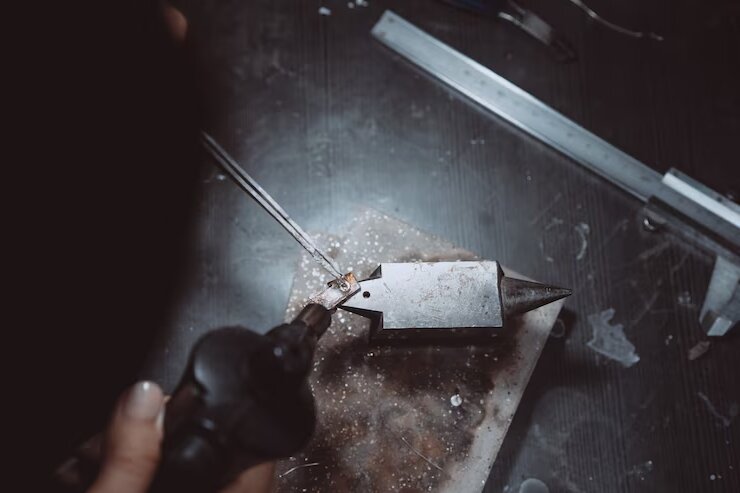
التقنيات وأفضل الممارسات في اللحام بالقوس المعدني المحمي
للحصول على لحامات عالية الجودة باستخدام اللحام بالقوس المعدني المحمي، من المهم اتباع بعض التقنيات وأفضل الممارسات. وهذه تساعد على ضمان أن تكون اللحامات قوية ومتينة وتفي بمعايير الصناعة.
اختيار القطب الكهربائي المناسب للمواد المختلفة
اختيار القطب المناسب هو المفتاح للحصول على أفضل جودة لحام. تحتاج المواد المختلفة إلى أقطاب كهربائية مختلفة. على سبيل المثال، الأقطاب الكهربائية المغلفة الأساسية رائعة للفولاذ عالي القوة، في حين أن الأقطاب الكهربائية السليلوزية أفضل للحام الرأسي أو العلوي.
الحفاظ على طول القوس الصحيح
يجب أن يكون طول القوس بنفس قطر القطب الكهربائي تقريبًا. يمكن لطول القوس الأقصر أن يتسبب في تبريد حوض اللحام بسرعة كبيرة، مما يؤدي إلى اختراق ضعيف. قد يؤدي طول القوس الأطول إلى زيادة الترشيش وتقليل جودة اللحام.
التحكم في سرعة السفر وزاويته
يمكن أن يؤدي تحريك القطب بسرعة كبيرة جدًا إلى لحامات ضعيفة مع اختراق ضعيف بينما يمكن أن يؤدي تحريكه ببطء شديد إلى الكثير من الحرارة والتشويه. يجب تحريك القطب بزاوية تتراوح بين 15 و30 درجة تقريبًا لضمان التوزيع المتساوي للحرارة والتشكيل السليم للحبة.
إدارة المدخلات الحرارية للحصول على جودة لحام مثالية
قد تتسبب الحرارة الزائدة عن الحد في حدوث تناثر وإضعاف اللحام، بينما قد تؤدي الحرارة القليلة جدًا إلى ضعف الانصهار. من خلال ضبط التيار وسرعة الحركة، يمكنك التحكم في الحرارة لتحقيق أفضل جودة لحام دون الإضرار بالمادة.
ضمان تركيب المفصل بشكل صحيح
قبل اللحام، تأكد قبل اللحام، من محاذاة حواف المواد بشكل صحيح وعدم وجود فجوات أو محاذاة غير صحيحة. تقلل الوصلة المجهزة بشكل جيد من خطر حدوث عيوب مثل الثغرات السفلية أو البقع الضعيفة.
ما الفرق بين SMAW وGMAW؟
كل من SMAW و GMAW هما طريقتا لحام شائعتان، ولكنهما تختلفان في المعدات والعملية والاستخدام. دعونا نفصل الاختلافات الرئيسية:
العملية والتقنية
- SMAW: في لحام SMAW، يتم استخدام قطب كهربائي قابل للاستهلاك مطلي بالتدفق لإنشاء اللحام. يولد طلاء التدفق غاز تدريع لحماية اللحام المنصهر من التلوث. يذوب القطب أثناء العملية، ويشكل المعدن المنصهر رابطة مع المادة الأساسية.
- GMAW: يُطلق عليه أيضًا لحام ميغيستخدم GMAW قطبًا كهربائيًا سلكيًا يتم تغذيته باستمرار يذوب لتشكيل اللحام. يتم حماية العملية بغاز خامل، مثل الأرجون أو مزيج من الغازات، لحماية اللحام من التلوث.
تعقيد المعدات
- SMAW: يستخدم SMAW معدات أساسية، بما في ذلك ماكينة لحام وحامل قطب كهربائي ومشبك أرضي وأقطاب كهربائية. إعدادها البسيط يجعلها مثالية للأعمال في الموقع والمواقع البعيدة.
- GMAW: يتطلب GMAW معدات أكثر تعقيدًا، مثل ماكينة لحام مزودة بمغذي أسلاك ونظام إمداد بالغاز. هذا الإعداد يجعل GMAW أكثر ملاءمة للبيئات الخاضعة للرقابة، مثل ورش العمل أو المصانع، حيث يكون التنقل أقل أهمية.
السرعة والكفاءة
- SMAW: يعتبر SMAW أبطأ بشكل عام من GMAW بسبب التغذية اليدوية للقطب الكهربائي والحاجة إلى تغيير القطب بشكل متكرر.
- GMAW: GMAW أسرع وأكثر كفاءة. تقلل التغذية المستمرة بالأسلاك من وقت التعطل، مما يجعلها مثالية لبيئات الإنتاج العالي حيث تكون السرعة والكفاءة مهمتين.
جودة اللحام ونظافته
- SMAW: قد تحتوي اللحامات المصنوعة باستخدام SMAW على المزيد من الخبث وتحتاج إلى المزيد من التنظيف بعد اللحام بسبب طلاء التدفق على القطب.
- GMAW: تنتج GMAW لحامات أنظف مع الحد الأدنى من الترشيش والخبث، مما يؤدي إلى تنظيف أقل بعد اللحام. وتؤدي العملية أيضًا إلى لحامات أكثر سلاسة وجمالية.
خاتمة
لحام القوس المعدني المحمي هو تقنية لحام متعددة الاستخدامات وفعالة من حيث التكلفة تستخدم على نطاق واسع في مختلف الصناعات، من البناء إلى التصنيع. إن بساطته وسهولة حمله وقدرته على لحام مجموعة واسعة من المواد تجعله طريقة مفضلة للعديد من مشاريع اللحام.
إذا كنت تبحث عن حل لحام موثوق به أو كنت بحاجة إلى مزيد من المعلومات عن SMAW لمشروعك التالي، فلا تتردد في تواصل معنا. فريقنا هنا لمساعدتك في جميع احتياجات اللحام الخاصة بك وضمان حصول مشروعك على أفضل النتائج.
مهلا، أنا كيفن لي
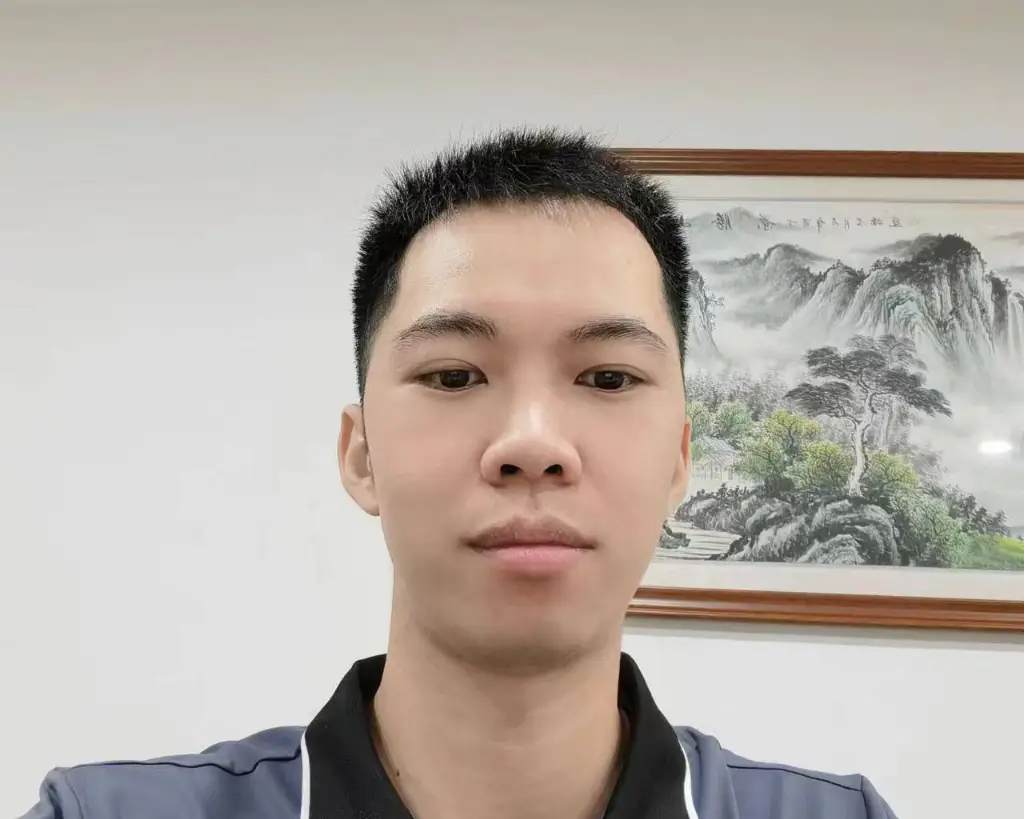
على مدى السنوات العشر الماضية، كنت منغمسًا في أشكال مختلفة من تصنيع الصفائح المعدنية، وشاركت رؤى رائعة هنا من تجاربي عبر ورش العمل المتنوعة.
ابقى على تواصل

كيفن لي
لدي أكثر من عشر سنوات من الخبرة المهنية في تصنيع الصفائح المعدنية، وتخصصت في القطع بالليزر، والثني، واللحام، وتقنيات معالجة الأسطح. كمدير فني في شنغن، أنا ملتزم بحل تحديات التصنيع المعقدة ودفع الابتكار والجودة في كل مشروع.

